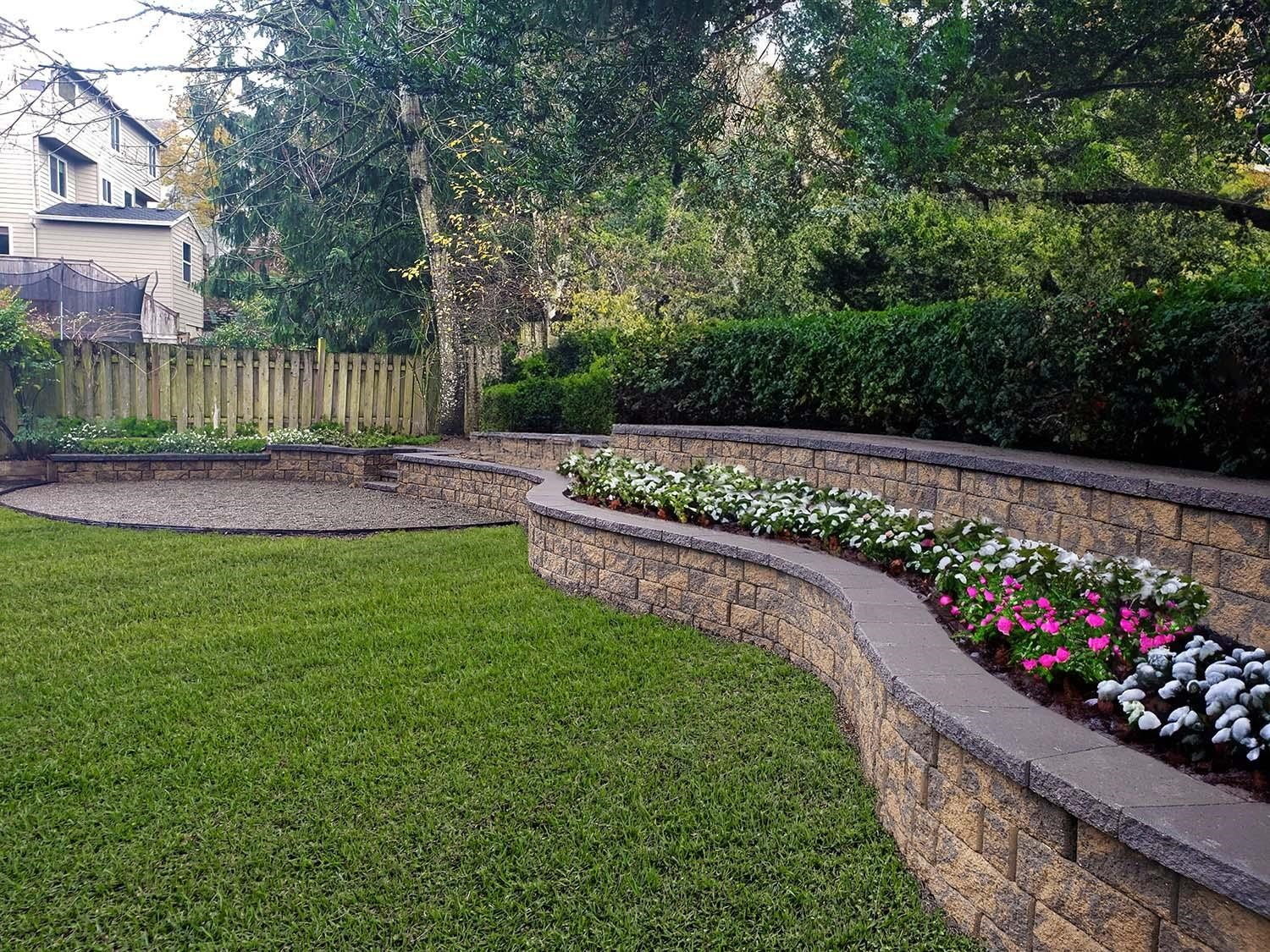
Is it difficult for you to design the outdoor area you have always wanted from your sloped yard? Perhaps the answer you have been looking for is retention walls. These aesthetically pleasing but useful buildings improve the look of your yard and assist in reclaiming areas you might have considered as useless.
Retaining walls are discussed in this post together with its advantages, how to design and install one to turn your outdoor space into a useful and attractive location.
Sturdy vertical constructions meant to keep back soil and stop erosion called retaining walls. They let homeowners maximize their yards by helping to create level sections on sloping or uneven ground. From natural stone to concrete blocks and even wood, these walls are made in several materials and designs.
There are several types of retaining walls, each suited to different needs and aesthetics:
● Segmental Retaining Walls: These walls are made of concrete blocks, secured by their weight and glued together to keep them in place, designed to resist pressure from the soil.
● Rock Walls: These walls incorporate the look of natural stone rock or boulders for a more seamless integration with native materials.
● Wood Walls: A good money saving option but are not long lasting.
Each type has its advantages, depending on the topography of your yard and your design preferences.
While retaining walls are primarily used to manage sloped land and erosion, they offer multiple other benefits, including:
● Erosion Control: By holding back soil, retaining walls prevent water runoff and erosion, protecting your yard and home.
● Aesthetic Appeal: Retaining walls add structure and visual interest to outdoor spaces, enhancing your home’s curb appeal.
● Property Value: A well-designed retaining wall can significantly increase your property’s value by improving functionality and appearance.
Sloped terrain is a common challenge for homeowners. Retaining walls solve this problem by carving out flat, functional spaces. Imagine converting a steep hill into levelled terraces you can use for:
● Gardens: Create a stunning tiered garden for flowers, vegetables, or herbs.
● At Edge of Patios: Add an outdoor living area for dining, entertaining, or relaxing.
● To Care Out Children’s Play Areas: Give kids a safe, flat space to play.
● Expanding the Yard: Get rid of a slope and create more usable space for patios, lawns or landscaping.
With retaining walls, you can truly unlock the full potential of your yard.
If you're ready to transform your outdoor environment, Lewis Landscape Services has the skills to make it a reality. The crew specializes in retaining walls in Portland and provides personalized solutions that blend functionality and aesthetics. From concept to implementation, they guarantee exact handling of your project under consideration and care.
Before you jump into building a retaining wall, there are important factors to consider:
● Assess Your Soil: Different types of soil require different materials and designs for retaining walls.
● Plan for Drainage: Proper drainage is essential to prevent water pressure from damaging your wall.
● Check Local Regulations: Depending on your area, you may need permits for certain types of retaining walls, such as walls over 4’ tall. It’s often best to build Terraced Walls if you need more than 4’ of area retained - to avoid the high costs for permits and engineering.
● Set a Budget: Establishing a clear budget will help you prioritise materials and design features.
Though they seem basic, designing and building retaining walls calls for knowledge. Employing experts such as Lewis Landscape's team guarantees that your wall is not only aesthetically pleasing but also structurally sound and constructed to last.
Installing a retaining wall generally involves the following steps:
If a wall is built properly, there won’t be too much ongoing maintenance to keep it working well. But yearly inspections will help to ensure the longevity of your retaining wall. Here are some quick tips:
● Inspect Yearly: Check for cracks, bulges, or signs of wear and tear.
● Address Drainage Issues: Ensure that the wall’s drainage system is functioning correctly.
● Keep It Clean: Remove debris, plants, or weeds that might grow too close to the wall and compromise its structure.
By taking these steps, you’ll enjoy a strong, durable retaining wall for years to come.
Particularly in steep sections, retaining walls are a great approach to maximize the possibilities in your yard. They not only design useful areas but also provide your outdoor space appeal and individuality. Retaining walls will help you realize your idea whether it relates to a garden, patio, or play area.
Lewis Landscape Services is available to help you at your ready to start point. Their knowledge of retaining walls in Portland will help you through every phase of the project and produce outcomes above your expectations.
Upgrade your yard right now. Set up a meeting with Lewis Landscape and realize your outdoor fantasies.